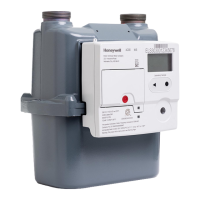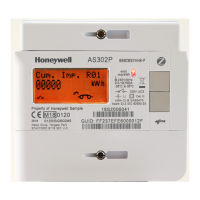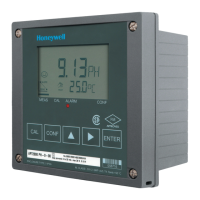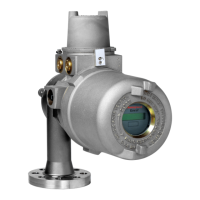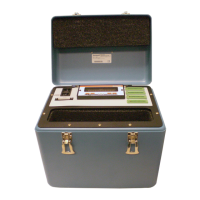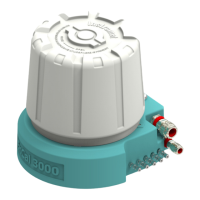119
If flow through one or more filters is over-restricted, the vacuum on those lines should
increase when sampled and create a Service Status message. Follow the test procedure,
cycle valve tests, and replace the filter if the test indicates a flow restriction.
NOTE
To avoid unnecessary downtime, do not wait until a Service Status message is
generated before replacing filters. Replace filters on an established schedule. You
can modify the schedule based on your facility's experience.
10.3.2.4.
Visual inspection
You should visually inspect the gas cell filter and in-line filters during each service. When
new, the filter housing is white and semi-transparent. If the housing appears clean and
testing indicates no flow restriction, you can postpone replacement until the next service.
If the filter appears dark and or deeply discolored, replace it. In-line filters on dirty and
corrosive sample points appear much sooner than filters on clean points. Increase the
replacement frequency of filters that foul ahead of schedule. Light discoloring is normal
and not a reason to replace the filter before its scheduled replacement date.
10.3.3. Servicing the pumps
10.3.3.1.
Self-monitoring and manual testing
The ACM 150 monitor constantly monitors its vacuum pumps. If either venturi pump fails
to provide adequate vacuum, the Backup Exhaust Pump turns on automatically, and a
Service Status message notifies the user. A message is also generated if the Boost Pump
fails to provide adequate flow; however, there is no backup for the Boost Pump. During
scheduled PM services or following any Service Status messages that might indicate a
pump problem, use the manual tests to check the pumps and cycle valve tests.
10.3.3.2.
Servicing the venturi pumps
The Bypass Venturi and Gas Cell Venturi are shown in Figure 11. There are no scheduled
services for the venturi pumps. If testing indicates inadequate vacuum, try increasing the
CDA pressure. If that does not restore adequate vacuum, run with the Backup Exhaust
Pump, and contact Honeywell for service advice.
10.3.3.3.
Servicing the mechanical pumps
The mechanical pumps are shown in Figure 12. The Boost Pump has dual heads, each
with a diaphragm and flapper valve that wear out and must be replaced periodically. The
parts and instructions are provided in a service kit (Expendable Parts List, Section. 10.3).
After removing the old diaphragm and flapper valve, wipe the internal metal surfaces to
remove particles before installing the new parts.
The Backup Exhaust Pump is intended to operate infrequently. If your venturi pumps
operate most of the time, it should never require service. However, if your facility cannot
supply CDA sufficient to run the venturi pumps, such that the Backup Exhaust Pump is in
continuous or frequent use, it must be serviced. After it accumulates a total run time of
one year, service the pump. Detailed instructions are provided in the Backup vacuum
pump.

